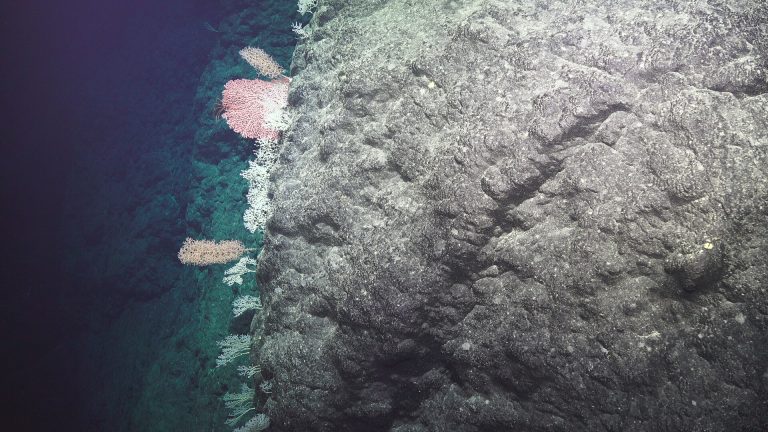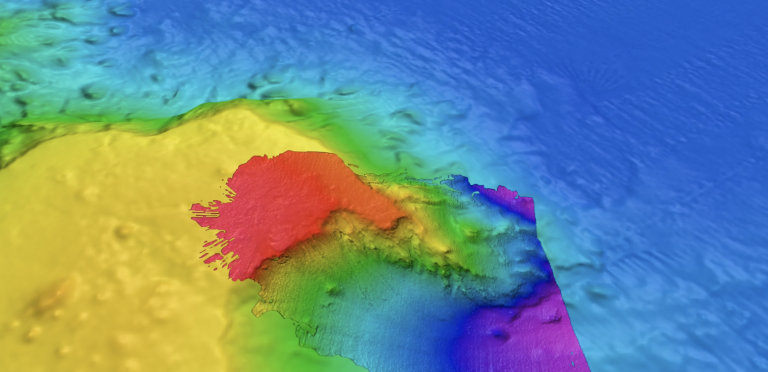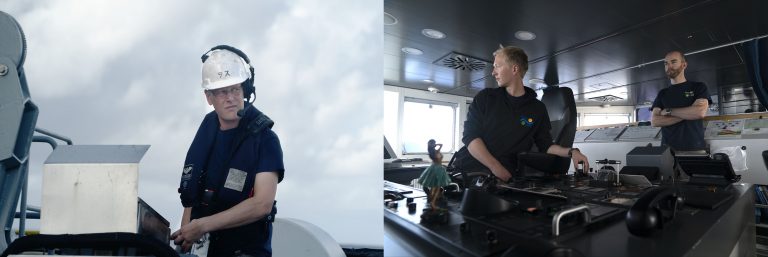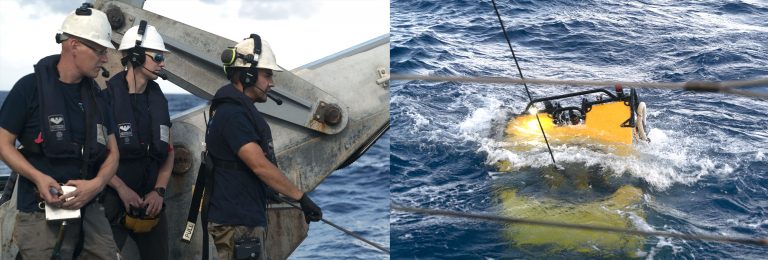For the crew, one of the many perks of working onboard Falkor (apart from the satisfaction of aiding the advancement of science) is that each expedition is unique. Every new cruise brings with it new people to meet, new science to learn, and new logistical challenges to overcome. This is something the team is completely familiar with, yet something about the Necker Ridge expedition still feels different.
Both the 24-7 operations and intense involvement of everyone onboard make an this extremely busy mission. However, once SuBastian hits the water, time seems to expand and slow down. The strategy in which the scientists are exploring the seafloor may be part of this phenomenon.

Meticulous and Replicable
“We’re very selective in where we deploy the ROV, because even if we’re covering a fair bit of ground, once you go back and you look at the aerial expanse of the seamount, we are still seeing just a relatively small percentage of it,” explains Brendan Roark, chief scientist. “One of the other things we’re careful about doing is what we think will be representative transects.”
Flying Remotely Operated Vehicle (ROV) SuBastian over the seafloor almost uninterruptedly feels very different from the ROV’s more common operation, which is to dive, explore, sample and come back over the course of around eight to ten hours. The way the dives are currently planned is of course not a whim, but a carefully designed strategy.
ROV SuBastian is exploring this area of the ocean for the first time, which means the scientists have to be very discerning when it comes to choosing the diving spots. After processing high definition bathymetric maps acquired with the ship’s multibeam echosounder, the team looks for geological features that might suggest the presence of megafauna. Such features include hard substrate or structures that might increase the flow of currents (hence benefiting filter-feeders).
Once the scientists choose a location, they dive along a contour line for a set distance. This is a meticulous process in which they do not even change the ROV’s camera angle. Being systematic in how they are observing the community composition at different depths is critical. This is an exercise that they replicate in each seamount – by keeping the navigation and dive characteristics consistent, the scientists can make a direct comparison from seamount to seamount, as well as making their technique replicable.

Non-Stop
Because of their previous work experience, the ROV team is very familiar with these types of dives. “This is not uncommon in the ROV world,” shares Russ Kjell, who supervises the ROV team. “However, we have not done so many transects with SuBastian.”
Hovering 1.5 to 2 meters over the seafloor can be tricky, “Especially if the ships takes a heave, the vehicle is programmed to compensate for that, and you don’t have much room to maneuver, so it could actually plunge into the seabed,” Russ explains. “But what we’ve done is dialed the controls back so it’s very light, yet even if it does want to go back to the seabed it won’t go beyond a certain point.”
Diving long transects over unknown territory poses its own particular challenges. The pilots must be very aware of the sonar and what it is showing up ahead so they can adjust the ship’s position, its speed, and the ROV accordingly. The ROV team keeps in constant communication with the officers on the Bridge, who maintain Falkor heading in the right direction and at the right pace, in spite of the elements.

“These types of dives can actually be easier,” shares Erik Suits, navigation officer. “You are moving with the water, instead of holding position like in most ROV dives.” That is, until the different forces that affect the vessel begin complicating the scene. During one of the dives, the currents were pushing Falkor in one direction while the wind pushed and yawed it. Both forces were opposing each other by about 120 degrees. Keeping an eye on every factor at the same time is fundamental.
Weather conditions might also change during the course of such long dives. Recovering SuBastian while wrestling with surface currents of over two knots helps shake things up and breaks the cadence of the prolonged operations. Time then accelerates while the vehicle is tested and prepared for its next mission, and the scientists swiftly recover the samples and process them in the wet lab.
After that, time stretches again, and a transect is drawn over the silhouette of a previously unexplored seamount.


